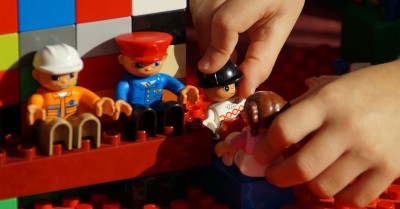Children develop their fine motor skills when they use their smaller muscles in the hands, fingers, and wrists.
Fine Motor refers to the development of small muscles of the body (particularly the small muscles in hands) which will enable actions like grasping small objects, clicking, correct writing grasp etc.
The most important fine motor skills children need to develop include the following:
- The palmar arches allow the palms to curl inward. Strengthening these helps coordinate the movement of fingers, which is needed for writing, unbuttoning clothes, and gripping.
- Wrist stability develops by early school years. It allows children to move their fingers with strength and control.
- Skilled side of the hand is the use of the thumb, index finger, and other fingers together for precision grasping.
- Intrinsic hand muscle development is the ability to perform small movements with the hand, where the tip of the thumb, index finger, and middle finger touch.
- Bilateral hand skills permit the coordination of both hands at the same time.
- Scissor skills develop by age 4 and teach hand strength and hand-eye coordination.
Fine Motor Skills Activities
To improve a child's fine motor skills, a variety of experiences can be incorporated into the daily routine which will enable them to practice their fine motor development.
Activities include:
- Assisting with meal preparation, like stirring, mixing, or pouring ingredients.
- Putting together a puzzle.
- Play board games that involve rolling dice.
- Pouring their own drinks.
- Roll and flatten the clay and then use a cookie cutter to make cutouts.
- Using a hole puncher.
- Practice placing rubber bands around a can.
- Place objects in a container and have the child remove them with tweezers.
- Making paper balls and squeezing sponges.
- Spraying with trigger-type spray bottles.
- Provide opportunities for practising timed grasp and release with tools other than scissors.
- Using tweezers or tongs to sort cotton balls, blocks, playdough or balls
- Pop the plastic ‘bubbles’ on packing sheets.
- Open and close zip-locked bags.
- Snapping snaps.
- Winding up wind up toys that have a knob.
- Use an eye-dropper to make pictures.
- Mixing food colouring with water and dripping it on to paper towels.
- Playing tug of war.
- Practise unscrewing and screwing the lids of different types of jars and containers.
- Put objects inside to make the game more interesting.
- Paper Tearing – different textures and thickness can be used for variety, and to increase hand strength.
- Finger games and exercises.
- Use of plasticine or Therapeutic Putty and/or modelling clay to knead and roll.
- Use of bricks and construction toys.
- Lacing - use lacing cards to create patterns and develop pincer grip.
- Threading beads – use beads of different colours, shapes and sizes to create patterns for a child to copy.
- Cutting pieces of straws, grass, strips of paper or rolls of play dough.
- Moving small objects from one container to another.
- Putting coins (or counters) into a money box.
- Shaving foam to make shapes on a desk.
- Clothes Pegs – clipping pegs onto and removing from an empty shoebox or a piece of cardboard.
By developing a child’s fine motor skills, it will enable their finger and muscles to become stronger to complete everyday tasks.
Reference:
How to Help Your Child Develop Fine Motor Skills, Healthline
Pre - Writing Skills, Aussie Childcare Network
What Are Fine Motor Skills in Children?, Study Academy
